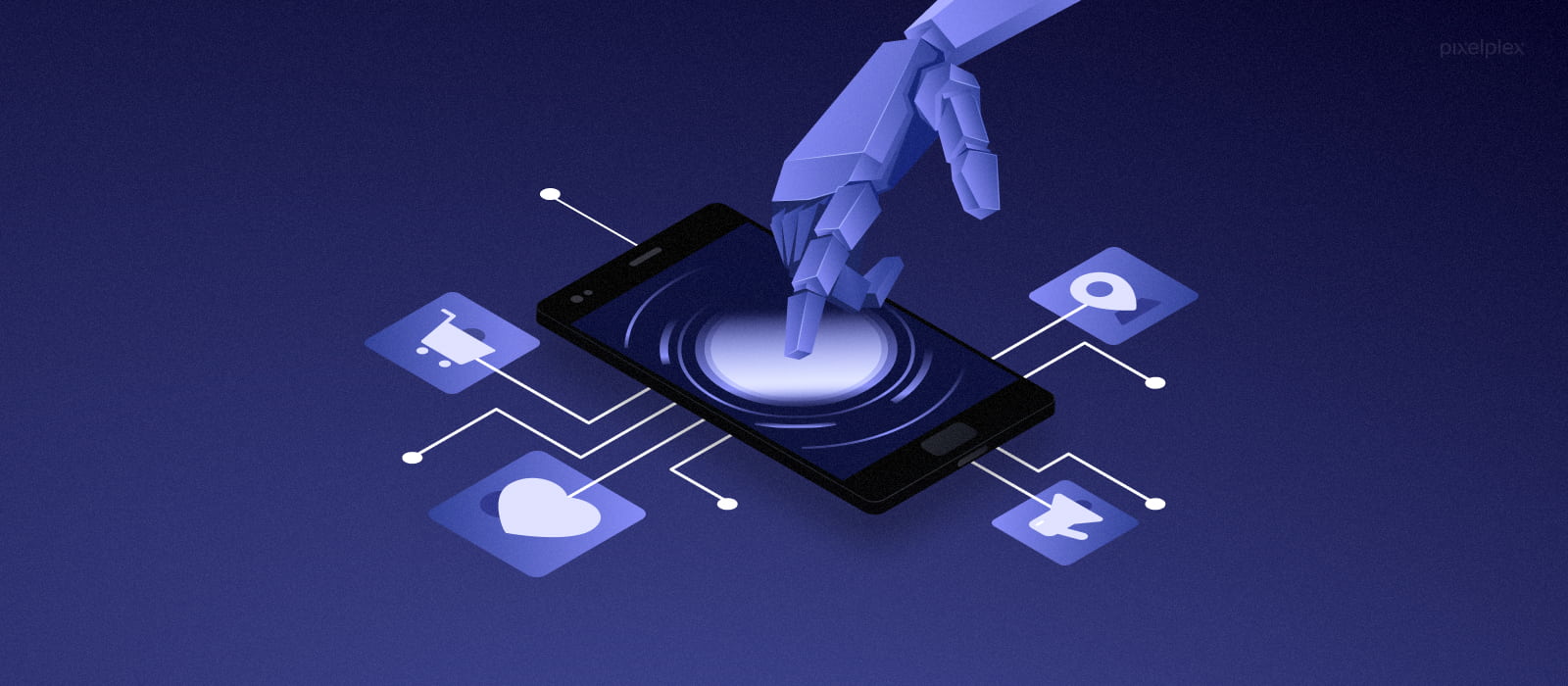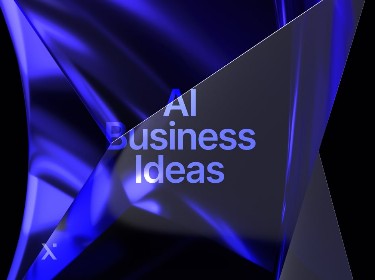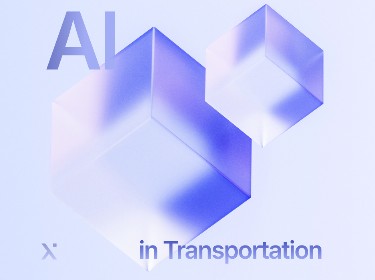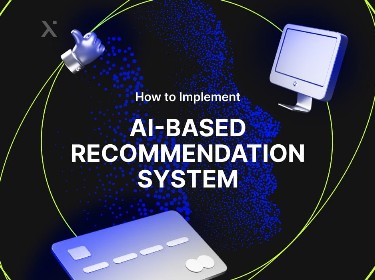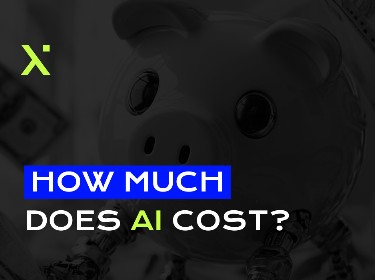Generative AI is now reshaping the familiar business processes, boosting productivity and streamlining repetitive tasks. But what exactly are the use cases the technology offers to companies in different industry domains?
Generative AI applications and use cases are very diverse, so it’s no wonder that companies from many different industries are thinking about introducing the technology to their workflows.
65% of the 225 US executives surveyed by KPMG US believe that generative AI will have a high impact on their company in the coming years. The respondents also stated that they are very likely to spend the next few months deepening their knowledge of the technology and evaluating its capabilities for their business processes.
In this article our research and development team collected the most intriguing generative AI applications across different industries. We will also take a look at companies at the forefront of the technology’s adoption.
Have you heard about healthcare digital twins? Take a look at our overview of this innovative technology
This article is part of our larger series dedicated to Generative AI. To explore this topic in greater detail, here’s the list of articles we recommend:
Generative AI Market Map: From History and State to Trends and Applications [With Infographic]
Introduction to Generative AI and the Innovative Solutions It Offers
How is generative AI beneficial for businesses?
![]()
Businesses are increasingly interested in generative AI since it offers a wide range of benefits including:
- Boosted productivity — generative AI can help deal with repetitive tasks faster or, in some cases, completely automate them.
- Reduced costs — by automating some processes, generative AI allows companies to function with fewer staff members, consequently reducing salary costs and expenses on office management and hardware and software maintenance.
- Improved personalization — with generative AI solutions it takes just a few clicks to customize content such as visuals or offers to meet specific customers’ needs.
- Upgraded decision-making — generative AI can provide companies with valuable insights on different aspects of their processes, allowing them to find more effective and creative solutions.
Top generative AI applications and use cases across industries
There are different generative AI use cases that can be applied to a variety of industry domains, including:
- Chatbots and virtual assistants
- Design and development
- Content creation and repurposing
- Data analytics
- Risk mitigation
- Predictive maintenance
Let’s take a look at how these use cases improve processes across different industries.
![]()
eCommerce
The most effective generative AI application in eCommerce is AI chatbots. By leveraging these, companies will be able to provide customers with personalized information about products, pricing, and special offers with no need to maintain an extensive customer support department. In the meantime, clients will get an immediate response to their requests and questions. A win-win solution.
Generative AI can also become a virtual shopping assistant. It can analyze the items in a customer’s cart and their purchase history to suggest other products they may like.
eCommerce businesses can also use generative AI to streamline the design of online storefronts and product cards to present their offers to customers as soon as possible. Not to mention the visualization insights they can derive from generative AI suggestions.
Healthcare
AI can be efficiently applied in healthcare software development. For example, the technology makes it possible to create realistic copies of medical records for research. In this way, patients will not have to disclose their private data, while the researchers will have all the necessary information for examination and experimentation.
Moreover, generative AI can be applied to summarize the doctor-patient conversations that take place during appointments. This will allow doctors to spend much less time on paperwork and be fully present in the conversation, without the need to switch attention from the patient to their notes.
One more generative AI use case in healthcare is educating medical students. Healthcare institutions can deploy special generative AI chatbots trained to answer as if they were patients with various medical conditions. This will allow students to practice their conversational and diagnosing skills.
Travel and transportation
Generative AI chatbots can greatly improve travel companies’ service by providing customers with all the necessary information on available trips, transportation and accommodation.
Transportation providers, such as airlines or coach operators, can use generative AI to process extensive amounts of data about trips and passengers to identify repetitive patterns. Based on these findings, businesses may reconsider their routes and offers in line with their clients’ needs.
Transportation companies can also train generative AI with historical data about delays or periods of high demand, enabling it to propose effective mitigation strategies.
Manufacturing and supply chain
As well as introducing generative AI chatbots and virtual assistants for their customer support and sales departments, manufacturing companies can use the technology to facilitate product development and design.
To achieve this, businesses need to collect an all-encompassing dataset covering features of their existing products, their quality characteristics, and statistics on user interaction and satisfaction. Based on this information, the AI algorithm will be able to suggest new solutions or highlight aspects that need improvement.
Additionally, manufacturing companies can leverage generative AI to improve machine maintenance by providing tailored recommendations based on the device’s usage patterns and specific needs.
Another generative AI use case is helping companies determine the most effective and risk-free logistics options. The technology can generate optimal routes and schedules based on the company’s fleet and weather and traffic conditions. This will allow fast and safe delivery of materials or ready-made products across all supply chain destinations, from the company’s facilities to end-users.
What is predictive analytics in the supply chain? Read our article to find out
Utilities
Utility providers can leverage generative AI technology to better analyze data on resource usage at different times of the day and in various areas. This way businesses can improve their existing distribution strategy and ensure efficient use of resources.
Predictive maintenance is also a highly beneficial generative AI use case for utility providers, since it allows companies to proactively detect and handle potential issues before they lead to machinery malfunction and downtime. This will not only help reduce maintenance costs and time but also greatly improve the efficiency and reliability of utility systems.
Entertainment
The entertainment industry has a never-ceasing need for fresh content, so it is readily embracing generative AI, which enables the creation of diverse content at a much quicker pace. The technology streamlines the process of idea generation, creates visuals, texts, and videos, and allows creators to repurpose existing pieces.
Entertainment businesses can also use generative AI to improve their marketing and boost sales by asking the solution to research their competitors and highlight their strengths and weaknesses. Companies can then use this information to create more sophisticated content plans and marketing strategies.
Education
Applied to education, generative AI can streamline the learning process for both in-class learners and self-learners. One possible generative AI use case is the creation of personalized learning plans that consider a specific student’s goals, preferable learning style, challenges, and other factors.
Teachers can use the technology to facilitate the development of various study materials, such as hand-outs and illustrations, and tailor them for the needs of particular classes or students. Generative AI can also assist in performance evaluation and grading, making the process less time and resource consuming and allowing teachers to focus on more creative tasks.
Find out what key technologies are driving digital transformation in education
Three real-world examples of leveraging AI for business
Some of the biggest and most well-established businesses are already adopting generative AI technology. Below, we will examine generative AI use cases from world-famous companies such as Atlassian, Expedia, and Duolingo.
Atlassian
Atlassian, a software company famous for its products for productivity and team collaboration, has created its own generative AI virtual teammate. The solution, Atlassian Intelligence, is built into the Atlassian platform.
The virtual teammate can perform different operations, such as:
- understanding natural language questions
- summarizing and extracting the necessary details from the input content
- generating new content using natural language prompts (e.g. company or project glossaries, dictionaries, and knowledge graphs)
- translating natural language queries into Jira Query Language to find the necessary data across all Jira Cloud products
- processing repetitive user requests instead of human support specialists, allowing them to focus on more difficult queries.
Expedia
Expedia, one of the most popular travel apps for booking accommodation and researching travel destinations, has announced the integration of a ChatGPT-powered travel planner into their solution.
Through custom mobile app development, the new functionality is already available for users of the Expedia mobile app on iOS devices, with Android support coming soon.
Currently, the generative AI solution can’t plan the whole trip, but it is able to:
- recommend hotels
- suggest interesting places to explore and things to try at a destination
- provide information about average weather conditions at a specific location.
Duolingo
The most popular language learning app, Duolingo, has integrated ChatGPT into its new subscription tier, Duolingo Max. The application uses generative AI capabilities to power two new features:
- Explain My Answer gives the user a detailed clarification of why their answer was right or wrong, and provides examples
- Roleplay allows users to practice conversation skills with different characters in various situations. Duolingo has made sure that the AI behind this feature is highly interactive, achieving uniqueness in each conversation.
The list of big names introducing generative AI into their business is a long one. In addition to the companies listed above, some of the early adopters of generative AI include Coca-Cola, Instacart, Mastercard, Shopify, Netflix, Microsoft, and many others.
How can you start enterprise digital transformation? Find out in our article
How to introduce generative AI to your business processes in 6 steps
To help you better navigate the process of introducing generative AI into your business workflows, we’ve broken it down into six vital steps:
Step 1. Decide on the generative AI solution
Based on your needs and resources, you can opt for an integration of an already existing generative AI solution, such as ChatGPT or Midjourney, or create your own model from scratch. This will largely influence your overall generative AI implementation strategy.
Step 2. Work out a clear implementation strategy
It is vital to have a plan before heading to any business transformation. So we recommend you make a roadmap of your new implementations, issue the necessary guidelines, and determine the success metrics and people responsible for supervising the process.
Step 3. Prepare the data
To provide you with truly insightful suggestions and high quality output, a generative AI model requires a comprehensive dataset which accurately represents all aspects of your business processes. That’s why you will need to gather the required information, make sure it is not biased or fragmented, and ensure ongoing upgrades and updates of the dataset in the future.
Step 4. Get the relevant tech and specialists
You will need to define, acquire, and maintain the necessary software and hardware depending on your chosen generative AI solution and your goals. Also, you may need to seek assistance from professional AI developers, or even hire an in-house specialist.
Step 5. Test the solution
Without proper testing, the output of generative AI is often of poor quality, biased, or completely wrong. That’s why you will need to carefully test your solution and analyze how it solves real-life business tasks.
Step 6. Deploy your generative AI solution
Once the generative AI solution passes all the necessary tests, it can be applied to tackle the intended real-world tasks. However, remember to constantly evaluate its performance and make upgrades to achieve the best possible output.
Conclusion
There is every indication that generative AI will establish itself as one of the most vital technologies a business should leverage to stay competitive and achieve success. Since the technology is highly versatile and can be customized to the needs of specific departments or companies, we will definitely see lots of real-world applications of generative AI in the future.
Thinking about integrating generative AI into your business processes? Feel free to contact our team of experienced developers with a background of delivering high-performance AI solutions across various domains.
We can also assist you with other advanced technologies, including big data, AR/VR, blockchain, and metaverse development. Let’s discuss your project idea.
